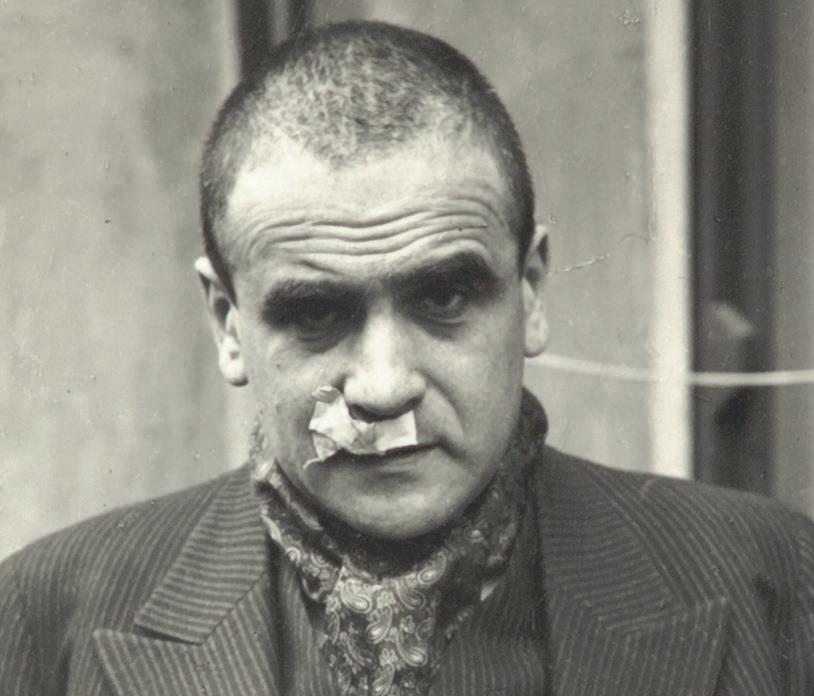
5 minute read
2.3 Who did the Nazis see as enemies and how did they treat them?
UNIT 2
Nazi Germany 1933–39
Many different groups of people were targeted by the Nazis, but not always in the same way or for the same reasons. A very disturbing element of the Nazi worldview was the idea that some people (‘races’) were ‘superior’ to others. They incorrectly believed that science could identify ‘pure blooded’ Germans who were part of a ‘master’ or ‘Aryan race’. The Nazis often persecuted, terrorised and even murdered those who were not regarded as part of the ‘Aryan race’ and the ‘People’s Community’ (Volksgemeinschaft).
Activity
Enemies and threats
On these pages you will read short biographies of some of the victims. These will help you understand how and why the Nazis attacked particular groups. Read the accounts carefully and complete a table like the one started below.
Who? Why were they seen as a threat to the Nazis? How were they persecuted? Which biography?
Helga Gross Helga was a child with a hearing impairment. The Nazis believed that those with physical disabilities weakened Germany. Helga was sterilised to prevent her from having children. B
Biography A: The Kusserow family
Franz and Hilda Kusserow and their eleven children were Jehovah’s Witnesses. The Nazis targeted Jehovah’s Witnesses because they would not swear loyalty to Hitler. Two of the family’s older sons were executed for refusing to serve in the army. The third son died after his release from the camps because of the terrible treatment he received. The three youngest children were put in Nazi-controlled foster homes for over six years. Other family members remained in concentration camps until the end of the war. Around 6,000 Jehovah’s Witnesses from Greater Germany were held in prisons or concentration camps and around 1,400 died there. In addition, approximately 250 were executed for refusing to fight in the war.
Biography B: Helga Gross
Helga was a child with a hearing impairment. When she was 16, she was forced to be sterilised. The Nazis did not want her to have children and pass on what they claimed was her ‘defect’. In July 1933 the Nazis introduced a law allowing for the compulsory sterilisation of those with illnesses that they believed could be passed onto future generations. They believed that people with physical disabilities weakened Germany and that their lives were worthless. Between 1933 and 1945 around 350,000 people were sterilised under this law without their consent. About 100 of these died as a result of the procedure. Helga survived but could not have children of her own. She moved to the USA in 1954.
Biography C: Rudolf Brazda

Born in Germany to Czech parents, Rudolf was arrested in 1937 for being gay and sentenced to six months in prison. Later, in 1941 he was arrested again and in 1942 sent to a concentration camp and subjected to hard labour and brutal treatment until 1945. The Nazis saw German gay men as a problem because they were unlikely to have children and help create a strong ‘Aryan race’. Some Nazis also wrongly believed that being gay was something that could spread within Germany and corrupt German values. Gay men faced terrible treatment. Many were castrated. About 100,000 were arrested. Of those, 10,000–15,000 were placed in concentration camps where the majority died.

Biography D: Ludwig Neumann
Ludwig was a German Jewish businessman who owned an industrial clothing company. He was ordered to sell his factory in 1938 and was sent to Dachau concentration camp. The Nazis believed that Jews were racially inferior and dangerous to the ‘Aryan race’. He was released on the understanding that he would leave Germany immediately. Ludwig Neumann emigrated to Britain.

UNIT 2
Nazi Germany 1933–39
Biography E: Bayume Muhammed Husen
Bayume Muhammed Husen was born in German East Africa (now Tanzania). From 1929 he lived in Berlin and did several jobs to make a living. In 1941 © Marianne he was denounced for Bechhaus-Gerst having a relationship with a white German woman. The Nazis believed that people of the ‘master race’ should not mix with people of ‘inferior’ blood. He was arrested for ‘racial disgrace’ and taken to a concentration camp without trial. He died in the camp in 1944.
Biography F: Karl Stojka
Karl was born to Roma parents in Austria. His ancestors had travelled in family wagons across Austria for more than two hundred years. When Germany took control of Austria in 1938, his family had to stop travelling because the Nazis did not like the Roma and Sinti (so called ‘Gypsies’) way of life; they believed that it was criminal. The Nazis also wanted to prevent ‘Gypsies’ from mixing with ‘Aryans’. In 1943, his family and tens of thousands of other Roma and Sinti were sent to camps. Many were later gassed, but Karl managed to survive the war.
Biography G: Anna Lehnkering
Anna (on the left in the photo) was born in Germany in 1915. When she was four years old she started having night terrors and anxieties. Later, she found learning at school difficult. In 1934, a year after the Nazis took power, Anna was forcibly sterilised because the Nazis saw her problems as a mental disability and didn’t want her to have children. In 1936, she was taken to a so-called healing and care home. Then, in 1940, she was transported to Grafeneck Euthanasia Centre and murdered in a gas chamber. From September 1939, the Nazis, with orders from Hitler, had begun to murder disabled children and later adults in Germany. The Nazis believed that people with mental or physical disabilities were worthless and made Germany weak. These murders were codenamed ‘Aktion T4’ and became known as the ‘euthanasia’ programme. T4 staff and their methods were later used in the Holocaust.

Now you have studied this unit, check your knowledge here: www.ucl.ac.uk/holocaust-education










